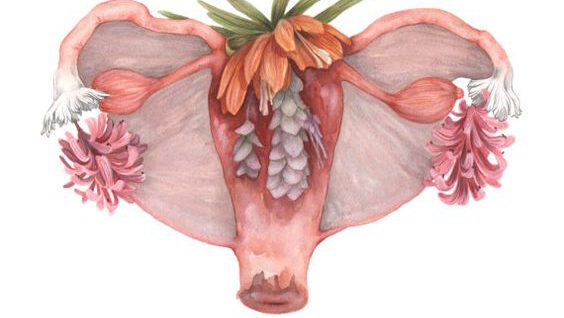5 reasons why we want to use her blessings?
She:
- Is very high in vitamin A,
- Has more vitamin C than oranges,
- Is very high in quercitin (antioxidant),
- is anti-inflammatory, and
- Possesses antiviral properties that have been shown to treat colds and flu.
Ingredients:
- 2/3 cup dried elderberries —
- 3 1/2 cups of water
- 2 Tbsp fresh or dried ginger root —
- 1 tsp cinnamon powder
- 1/2 tsp whole cloves or clove powder —
- 1 cup raw honey —
Directions:
- In medium saucepan and add water, elderberries, ginger, cinnamon and cloves
(Not the honey, because the heat will destroy the medicinal benefits)
- Boil, cover and reduce to a simmer for 45 minutes to an hour until you have reduced the liquid by about half.
- Strain, discard elderberries and let the liquid reach lukewarm, add 1 cup of honey and stir
- Mix well, pour the syrup into a large mason jar or 32 ounce glass bottle of some kind
- Refrigerate, it will last several months!
- *Combining unflavored gelatin and syrup you can make your own “Healthful Gummies”* The kids will LOVE them!
Standard dosing:
1/2 tsp to 1 tsp for kids
1/2 Tbsp to 1 Tbsp for adults
- In the event flu rears its ugly head, dose every 2-3 hours instead of once daily until symptoms are gone
- Also, it tastes wonderful on waffles, pancakes, pie ala mode or ice cream!
“Except from Mountain Rose Herbs
Also known as- Sambucus spp (Nigra for berries and Canadensis for flowers) American Elder, Common Elder, Black Elder, Bour Tree, and European Black Elder.
Introduction- European elder is a plant native to Europe, Northern Africa, and Western-and Central Asia. Its flowers and berries have a long history of use in traditional European medicine. Elder berries have also been used for making preserves, wines, winter cordials, and for adding flavor and color to other wines.
Constituents- Potassium nitrate, sambucin, sambunigrin, sugars. The complex sugars of the berries are the immune-active fraction.
Parts Used- Most commonly the flowers or berries. Dried fruits are less bitter than fresh.
The branches and leaves are poisonous. The small stem which is sometimes left on the berry is safe.
Typical Preparations- Teas, tinctures, encapsulations, syrups, wine, cordials, and even ketchup, often combined with propolis or echinacea.
Precautions- None for flowers. According to the Botanical Safety Handbook*, the unripe and raw fruit, seeds, bark and leaves contain a component, sambunigrin, which may cause vomiting or severe diarrhea if ingested.
*Michael McGuffin, ed., American Herbal Products Association’s Botanical Safety Handbook, (New York: CRC Press, 1997)”
Just a few words on the alternative (Tamiflu)…
“Back in 2008, the FDA started reviewing reports of abnormal behavior and disturbing brain effects in more than 1,800 children who had taken Tamiflu. The symptoms included convulsions, delirium and delusions. In Japan, five deaths were reported in children under 16 as a result of such neurological or psychiatric problems. Seven adult deaths have also been attributed to Tamiflu, due to its neuropsychiatric effect. According to a 2009 study, more than half of children taking Tamiflu experience side effects such as nausea and nightmares. Other more rare and bizarre side effects have also been reported, such as the case of a 19-year old British girl who developed toxic epidermal necrolysis and blindness after taking Tamiflu last year.” (Mercola.com)
Also known as- Sambucus spp (Nigra for berries and Canadensis for flowers) American Elder, Common Elder, Black Elder, Bour Tree, and European Black Elder.
Introduction- European elder is a plant native to Europe, Northern Africa, and Western-and Central Asia. Its flowers and berries have a long history of use in traditional European medicine. Elder berries have also been used for making preserves, wines, winter cordials, and for adding flavor and color to other wines.
Constituents- Potassium nitrate, sambucin, sambunigrin, sugars. The complex sugars of the berries are the immune-active fraction.
Parts Used- Most commonly the flowers or berries. Dried fruits are less bitter than fresh.
The branches and leaves are poisonous. The small stem which is sometimes left on the berry is safe.
Typical Preparations- Teas, tinctures, encapsulations, syrups, wine, cordials, and even ketchup, often combined with propolis or echinacea.
Precautions- None for flowers. According to the Botanical Safety Handbook*, the unripe and raw fruit, seeds, bark and leaves contain a component, sambunigrin, which may cause vomiting or severe diarrhea if ingested.
*Michael McGuffin, ed., American Herbal Products Association’s Botanical Safety Handbook, (New York: CRC Press, 1997)”
Just a few words on the alternative (Tamiflu)…
“Back in 2008, the FDA started reviewing reports of abnormal behavior and disturbing brain effects in more than 1,800 children who had taken Tamiflu. The symptoms included convulsions, delirium and delusions. In Japan, five deaths were reported in children under 16 as a result of such neurological or psychiatric problems. Seven adult deaths have also been attributed to Tamiflu, due to its neuropsychiatric effect. According to a 2009 study, more than half of children taking Tamiflu experience side effects such as nausea and nightmares. Other more rare and bizarre side effects have also been reported, such as the case of a 19-year old British girl who developed toxic epidermal necrolysis and blindness after taking Tamiflu last year.” (Mercola.com)
With Much Love, Ama’ritday
For educational purposes only. This information has not been evaluated by the Food and Drug Administration.
This information is not intended to diagnose, treat, cure, or prevent any disease.



